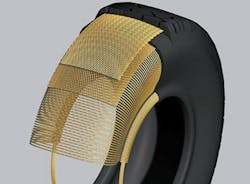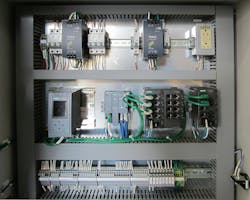Siemens Automation Used for Tire Cord Manufacturing Update
Tire cords—the steel wires that give a vehicle tire its shape and strength to support the weight of the vehicle and maintain the tire’s form—are not often thought about outside the tire manufacturing industry. Unless, of course, you happen to see them on your tires. In that case, you are way overdue to replace those tires.
Manufacturing these steel wires is a very exacting process in which tension requirements are paramount. A loss of ability to maintain the proper level of tension in its tire cord manufacturing process led one tire manufacturer to update its drives and control systems for tire cord production.
Chad Garner, a Nashville-based application engineer with industrial automation and equipment distributor Wesco who worked on this project with the manufacturer, said the tire manufacturer “needed to hold a very tight and consistent tension to meet its wire specifications. The company was using a custom solution that had been developed for them by a small local company that was no longer in business. This solution originally allowed the user to dial in the tension on the wire without making any adjustments to the drive parameters. However, the system was now only able to hold +/- 500 grams of tension on the line, even after testing nine different control schemes.”
According to Garner, the tire manufacturer wanted to replace this custom system with off-the-shelf products.
“This wire line was running at a maximum speed of 1,000 meters per minute,” said Garner. “The target wire tension requirements were 600-2000 grams, +/- 50 grams. Typical wire diameters on the line were 0.15-0.3 mm. During the initial testing period, the legacy PLC was used with Siemens drives and motors and the solution proved acceptable. Upon meeting and exceeding the desired specification, it was determined that a full Siemens solution was the most efficient and cost-effective answer for this tire manufacturer on the wire draw line.”
Garner noted that “a major financial aspect of this project was the amount of money invested in the controls cabinet on each machine. The legacy PLC and Ethernet cards, if purchased from the previous supplier, would have cost approximately $30,000; we were able to supply our solution for about one-third that amount. This was not only a significant reduction in cost from the previous solution, but it also resulted in component reduction, as we were able to combine functions in fewer parts.”
The Siemens system also featured integrated Ethernet on the PLC, enabling a reduction in expensive hardware and delivering a control cabinet that occupied a smaller footprint in the plant.
Based on the successful results using this system on the first machine, three more wire drawing lines at the facility were upgraded with this combination of Siemens technologies, with more planned for future installation.


